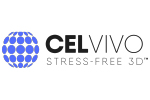Agilent provides xCELLigence impedance-based, label-free, real time cell analysis system and NovoCyte flow cytometers.
Automated microscopy and Spatial Proteomics
Automated microscopy and image analysis
Discover
Related topics
Study finds that automated liquid-handling operations are more robust, resilient, and efficient!

Jul 18, 2024
Liquid handling devices (LHD) improve lab efficiency and accuracy. They automate liquid transfers, increase experiment...
Scaling Whole-Genome Sequencing to >50,000 single cells using cellenONE

Jul 16, 2024
cellenONE technology enabled the creation of tens of thousands of high-quality single-cell genomes, paving the way for...
Theranostics: From Mice to Men and Back

Jun 25, 2024
Recorded webinar
Presenters: Prof. Dr. Ken Herrmann and Prof. Dr. Katharina Lückerath – Moderator: Hannah Notebaert
Automated Purification of Viral DNA and RNA from Biological Samples usingZymo Research Quick-DNA/RNA

Jun 14, 2024
The Quick DNA/RNA Viral MagBead Kit from Zymo has been automated with the Cybio FeliX pipetting robot from Analytik...
DNA Amplicon Library Preparation for Illumina® Sequencing

Jun 12, 2024
The precision of temperature control, efficient heating and cooling rates, and excellent temperature homogeneity across...
X-RAD 320 for irradiation therapy during quantifying study for in vivo collagen reorganization

Jun 5, 2024
Quantifying in vivo collagen reorganization during immunotherapy in murine melanoma with second harmonic generation...
High-frequency Ultrasound System For Preclinical Imaging

May 13, 2024
The Prospect T1 is an innovative high-frequency ultrasound system designed specifically for in vivo preclinical imaging...
April 2024 publication revealing benefits of using intravital microscopy in trascriptomics studies

May 7, 2024
Transcriptional activation of Bmal1 drives the inflammatory activity of monocytes by modulating mitochondrial unfolded...
Omics Studies of Tumor Cells under Microgravity Conditions

May 6, 2024
It is important for the analysis of data from space experiments to distinguish unspecific stress reactions from...
Column-Free CD14+ Monocyte Isolation using 50nm Superparamagentic Beads on MARS® Bar

Apr 25, 2024
The MARS® Bar Magnetic Separation Platform is a closed and automated isolation for cell therapy development and...

Apr 4, 2016
Efficient cellular uptake of nanoparticles is crucial for modulating the cell behaviors as well as dictating the cell fate. In this work, by using two commercial reagents (the membrane modification reagent “cholesterol–PEG–biotin” and the avidin-modified quantum dots (QDs) “QD–avidin”), we achieved the enhanced plasma membrane enrichment and endocytosis of fluorescent QDs in cancer cells through cell surface engineering. The QD–cell interaction involved two stages: adsorption and internalization. After incubation with cholesterol–PEG2k–biotin, the cell membrane was engineered with biotin groups that would actively recruit QD–avidin to the cell surface within 1 min. This fast adsorption process could realize high quality and photostable plasma membrane imaging, which is simple, low-cost and generally applicable as compared with the previously reported membrane protein/receptor labeling-based QD imaging. After that, the QDs attached on the cell surface underwent the internalization process and 12 h later, almost all the QDs were internalized through endocytosis. Notably, we found that the internalization of QDs was not via common endocytosis pathways (such as clathrin- or caveolae-mediated endocytosis or macropinocytosis) but more likely via lipid raft-dependent endocytosis. In contrast, without cell surface engineering, the QD–avidin showed negligible cellular uptake. The results demonstrate that cell surface engineering is an efficient strategy to image the plasma membrane and increase cellular uptake of nanoparticles, and will be potentially applied to enhance the efficacy of nanomedicines when therapeutic nanoparticles are used.
Related technologies: Conventional flow cytometry
Brand profile
Agilent provides xCELLigence impedance-based, label-free, real time cell analysis system and NovoCyte flow cytometers.
More info at:
www.aceabio.com